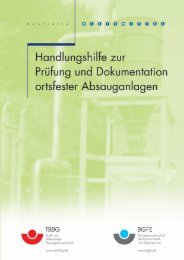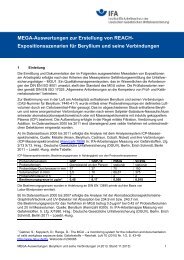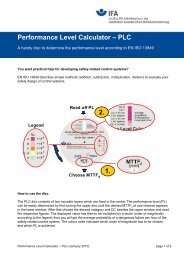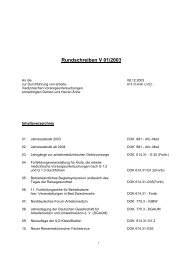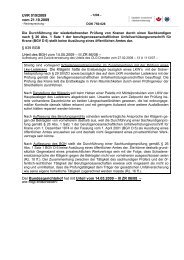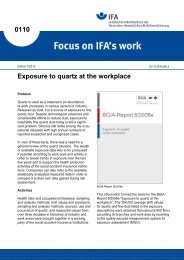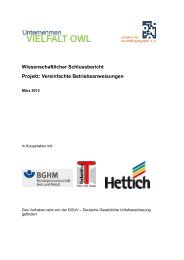Effectiveness of measures to prevent needlestick injuries among ...
Effectiveness of measures to prevent needlestick injuries among ...
Effectiveness of measures to prevent needlestick injuries among ...
You also want an ePaper? Increase the reach of your titles
YUMPU automatically turns print PDFs into web optimized ePapers that Google loves.
4 Intervention program evaluation<br />
<strong>to</strong> the quality assessment <strong>of</strong> the studies included appropriate definition <strong>of</strong> outcome,<br />
reliability <strong>of</strong> outcome assessment, and appropriate time intervals.<br />
The best <strong>of</strong> this subgroup was by Mak<strong>of</strong>sky et al., judged <strong>to</strong> be <strong>of</strong> intermediate quality<br />
[76]. Hospital employees within a medical/surgical ward and an intensive care unit<br />
were part <strong>of</strong> the evaluation. Prior <strong>to</strong> the intervention, needle disposal boxes within the<br />
medical surgical ward were located in common restrooms; the intensive care unit<br />
already had bedside needle disposal boxes, and thus served as a comparison series.<br />
On the medical-surgical ward, the intervention consisted <strong>of</strong> relocating needle disposal<br />
boxes <strong>to</strong> patient bedsides and changing from round <strong>to</strong> letterbox style. Box type alone<br />
was changed for the intensive care unit, so post-intervention changes could be attrib-<br />
uted <strong>to</strong> the change in the box type and not relocation. Prior <strong>to</strong> the intervention, 20<br />
boxes in the medical-surgical ward and seven from the intensive care unit were col-<br />
lected and rates <strong>of</strong> needle recapping were determined. Six months later, boxes were<br />
again collected and recapping rates determined. The authors observed no differences<br />
in recapping rates in the intensive care unit (change <strong>of</strong> box type, only), but a statisti-<br />
cally significant decrease from 30.2 % <strong>to</strong> 26.2 % recapped needles in the medical-sur-<br />
gical ward following the intervention (p = 0.0019). Although the outcome measure<br />
was not a direct measure <strong>of</strong> injury incidence, it was an objective, valid and reliable<br />
metric, given the study design and objective. A major strength <strong>of</strong> this evaluation was<br />
the authors’ consideration <strong>of</strong> the potential effect <strong>of</strong> changing disposal type in addition<br />
<strong>to</strong> location.<br />
Two other interventions (described in three papers) evaluated the effect <strong>of</strong> bedside<br />
placement <strong>of</strong> disposal boxes and risk <strong>of</strong> injury; both were rated “poor” quality. The<br />
two Haiduven et al. papers described a program in which needle disposal boxes were<br />
relocated <strong>to</strong> the area <strong>of</strong> use [74; 75]. The number <strong>of</strong> reported needle stick <strong>injuries</strong><br />
decreased from 144 in 1986, the year preceding the intervention, <strong>to</strong> 104 in 1990<br />
(p = 0.003). The number <strong>of</strong> reported <strong>injuries</strong> specifically resulting from recapping<br />
decreased from 32 in 1986 <strong>to</strong> six in 1990 (p = 0.005). The authors’ selection <strong>of</strong><br />
reported annual injury incidence failed <strong>to</strong> account for changes in number <strong>of</strong> personnel<br />
or number <strong>of</strong> procedures between intervention periods. No adjusted analyses were<br />
presented in either report, although the second paper describes a concurrently imple-<br />
Report „Needlestick <strong>injuries</strong>“ 49



